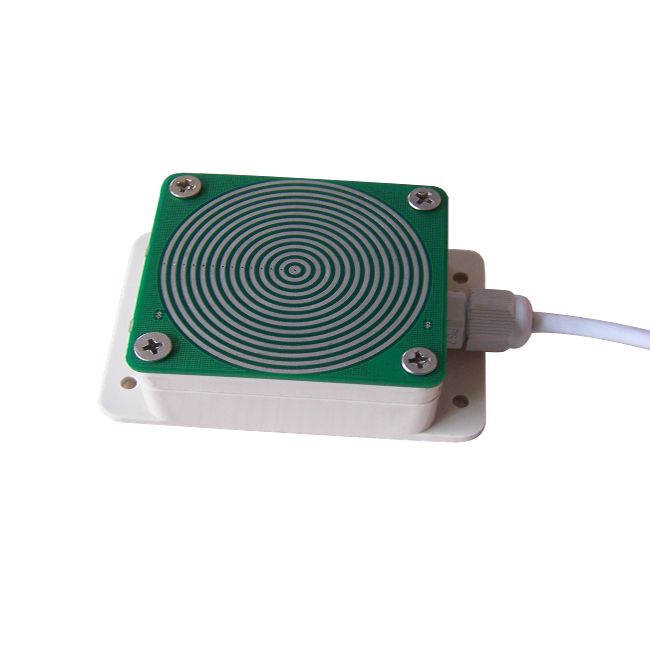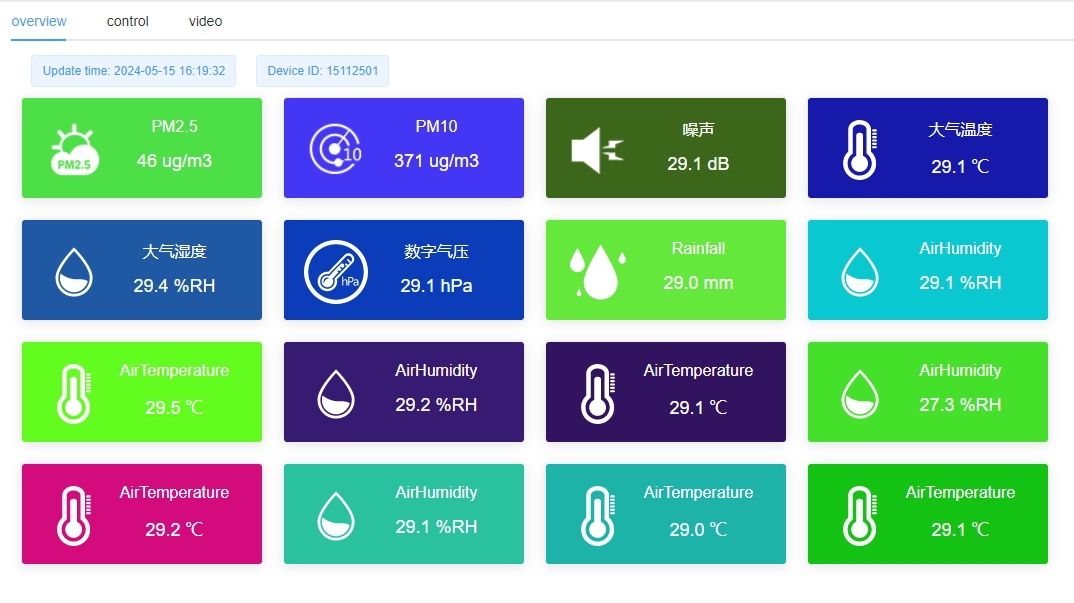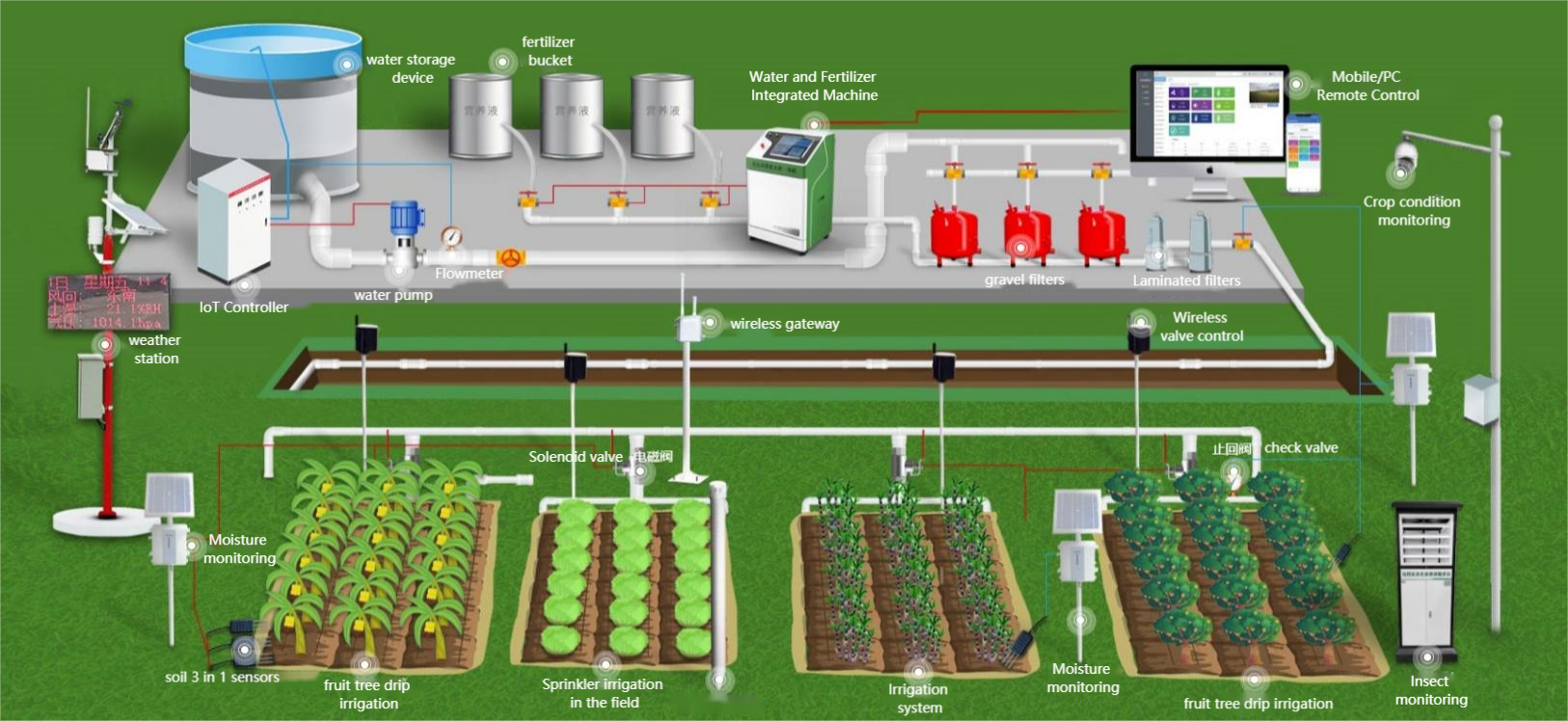

— Blogs —
—Products—
 Consumer hotline +8618073152920
Consumer hotline +8618073152920 WhatsApp:+8615367865107
Address:Room 102, District D, Houhu Industrial Park, Yuelu District, Changsha City, Hunan Province, China
Product knowledge
Time:2024-08-31 21:37:53 Popularity:258
Precision agriculture sensors refer to a variety of sensors used in agriculture and are a key component of modern agricultural technology. By collecting and analysing real-time data on the environment of the farmland and the state of the crops, they help farmers to manage the growth of their crops more accurately, increase productivity and reduce the waste of resources.
These sensors are able to collect detailed data on soil, crop, weather and environmental conditions and analyse the data to guide agricultural decision-making, allowing for the fine-tuned management of farmland and increased crop yields, while reducing resource waste and environmental pollution. Here are some details about Precision Agriculture Sensors:
There are many types of Precision Agriculture Sensors, mainly including but not limited to the following:
Soil Moisture Sensor: monitors the water content in the soil, which is essential for water management for crop growth.
Soil temperature sensor: monitors temperature changes in the soil in real time, helping farmers to adjust their farming strategies.
Soil pH Sensor: monitors the acidity and alkalinity of the soil, helping farmers adjust soil fertility to ensure crops are in the right growing environment.
Soil conductivity sensor: measures the salt and nutrient content of the soil, helping to apply fertiliser accurately.
Soil NPK sensor: measures the content of key nutrients in the soil, guiding precise fertiliser application.
 |  |  |
| Soil NPK Sensor | Soil Moisture Temperature sensor | 7 in 1 Soil Integrated Sensor |
 |  |  |
| Soil pH sensor | Soil EC Sensor | 4-in-1 Soil Temperature Moisture EC Salt Sensor |
Air temperature and humidity sensor: monitor the temperature and humidity changes in the atmospheric environment, which is important for the regulation of crop growth environment.
Light sensor: monitoring the sunshine time and intensity, which helps farmers to grasp the light demand required by crops at different growth stages.
Wind speed and direction sensor: real-time monitoring of wind speed and direction changes, helping farmers predict disaster weather and take appropriate measures.
Tipping Bucket Rain Gauge: This sensor uses a small bucket with a tipping device inside. When a certain amount of rainwater accumulates, the tipping bucket will automatically turn over, discharging the water and recording the amount of rainfall at the same time. Each time the bucket is turned over, a counting signal is generated, representing a certain amount of precipitation.
Photosynthesis Sensor(PAR sensor): Measures the efficiency of photosynthesis in plants to help assess crop growth.
Light Sensor: monitors the intensity and duration of light, which affects the efficiency of crop photosynthesis.
 |  |  |  |  |
| Anemometer Wind Speed sensor | Wind direction sensor | Tipping bucket rain gauge sensor | Tipping bucket rain gauge sensor | Piezoelectric Rain Gauge |
 |  |  |  |  |
| Atmospheric Temperature Humidity air pressure Sensor | ultrasonic wind speed and direction sensor | 5 in1 Ultrasonic Weather Station Sensor | All-in-One Weather Station | 7 in1 Ultrasonic Weather Station Sensor |
 |  |  |  |  |
| Solar Radiation Sensor | Solar Radiation Sensor | Photosynthetically Active Radiation Sensor; | illumination sensor | Ultrasonic Snow Depth Sensor |
 |  |  |  |  |
| Noise measurement sensor | Carbon dioxide(CO2) sensor | PM2.5 and PM10 sensors | Visibility sensors | Rain and snow sensor |
3. Water quality sensors:
Dissolved Oxygen Sensor: monitors the level of dissolved oxygen in the water column, which is critical for aquaculture and hydroponic crops.
4.Other sensors:
Carbon Dioxide Sensor: monitors the concentration of carbon dioxide in the air, which is important for photosynthetic efficiency in greenhouse cultivation.
Harmful gas sensors: detect harmful gases in the agricultural environment, such as ammonia and hydrogen sulphide, to ensure the health and safety of crops and farmers.
Satellite and drone sensors: Monitor crop growth and land use through remote sensing.
Position sensors: Use GPS satellite signals to determine latitude, longitude and altitude, providing basic positioning information for precision agriculture.
Stem diameter measurement sensors: monitor crop growth and assess growth rate and health.
Multi-spectral camera and chlorophyll fluorescence meter: assess crop health and nutritional status through spectral information of different wavelengths.

1. Improve the efficiency of resource use: through the environmental parameter data obtained by precision agriculture sensors, farmers can implement precision irrigation, fertiliser application and pest control, reduce resource waste and improve the efficiency of resource use.
2. Optimise the growing environment of crops: according to the sensor data, farmers can adjust the farming strategy in time, such as adjusting the amount of irrigation, fertilizer, light intensity, etc., to create the most suitable growing environment for the crops, improve crop yield and quality.
3. Reduce labour costs: the automated monitoring function of precision agriculture sensors can greatly reduce the labour intensity of farmers and reduce labour costs.
4. Enhance the efficiency of agricultural production: through data analysis and processing, farmers can manage their farmland more scientifically and achieve high efficiency and refinement of agricultural production.
5. Promote sustainable development of agriculture: The application of precision agriculture sensors helps to reduce the negative impact of agricultural production on the environment, such as reducing the use of chemical fertilisers and pesticides, reducing agricultural surface pollution, and promoting sustainable development of agriculture.
Data-driven decision-making: based on the data collected by sensors, more scientific agricultural decisions can be made.

In summary, Precision Agriculture Sensors play an indispensable role in modern agriculture, they provide farmers with scientific and precise management tools through real-time monitoring and data analysis, and promote the modernisation and sustainable development of agricultural production.
Related recommendations
Sensors & Weather Stations Catalog
Agriculture Sensors and Weather Stations Catalog-NiuBoL.pdf
Weather Stations Catalog-NiuBoL.pdf
Related products
 Combined air temperature and relative humidity sensor
Combined air temperature and relative humidity sensor Soil Moisture Temperature sensor for irrigation
Soil Moisture Temperature sensor for irrigation Soil pH sensor RS485 soil Testing instrument soil ph meter for agriculture
Soil pH sensor RS485 soil Testing instrument soil ph meter for agriculture Wind Speed sensor Output Modbus/RS485/Analog/0-5V/4-20mA
Wind Speed sensor Output Modbus/RS485/Analog/0-5V/4-20mA Tipping bucket rain gauge for weather monitoring auto rainfall sensor RS485/Outdoor/stainless steel
Tipping bucket rain gauge for weather monitoring auto rainfall sensor RS485/Outdoor/stainless steel Pyranometer Solar Radiation Sensor 4-20mA/RS485
Pyranometer Solar Radiation Sensor 4-20mA/RS485
Screenshot, WhatsApp to identify the QR code
WhatsApp number:+8615367865107
(Click on WhatsApp to copy and add friends)